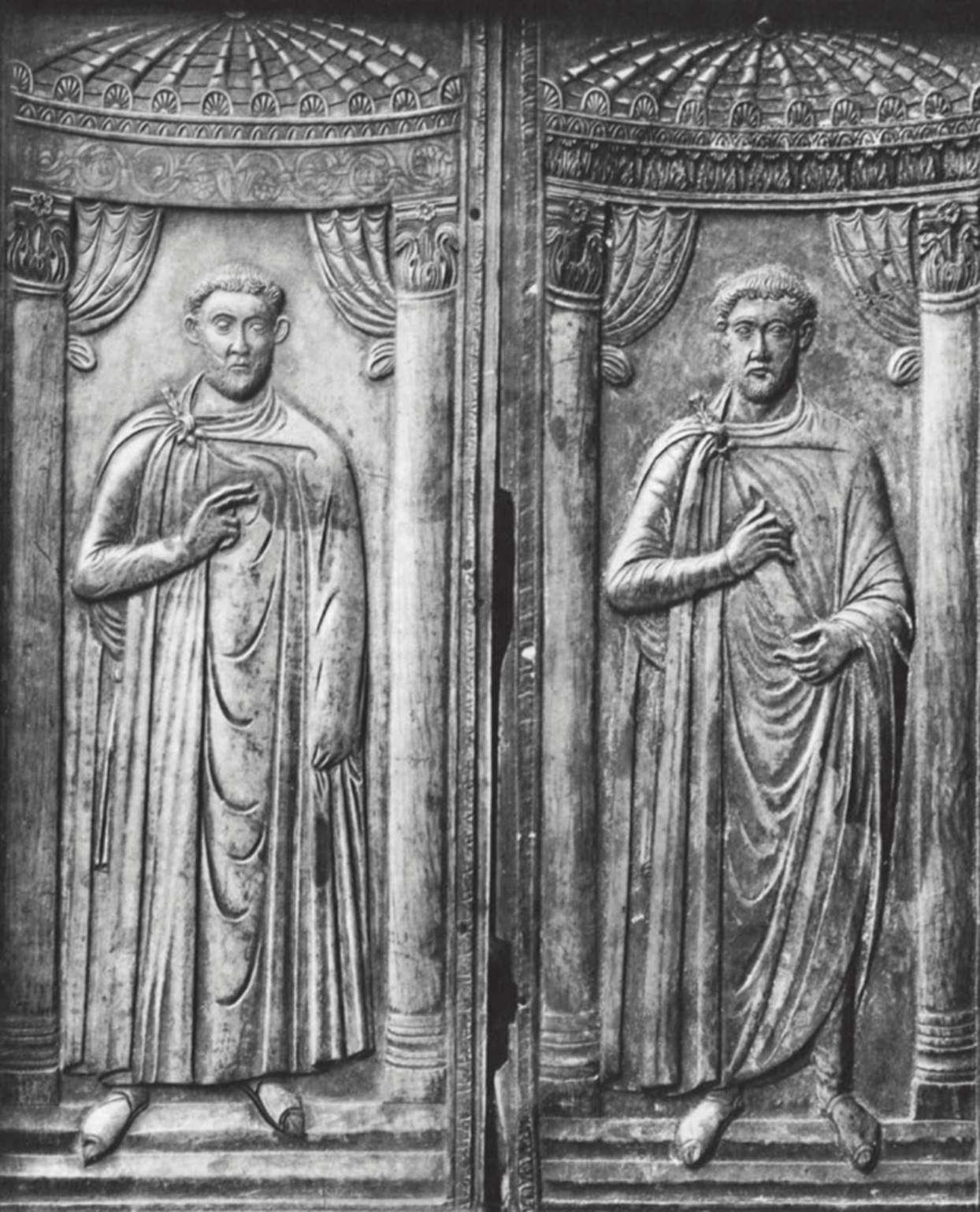Diptych of a patrician. North Italy, probably Ravenna, about 425. Ivory
Both panels are substantially intact, but the work is unfinished: the vine scroll on the entablature of the rear leaf is only incised, and the egg-and- dart molding on the frames of both leaves is incomplete; the costume on the rear leaf appears only partially carved. These conditions enhance the impression that the front leaf is more deeply and richly worked than the rear one.
On each leaf, a man with full hair and short beard stands, wearing the chlamys, in a tribunal. The structure is approached by steps, and has two Corinthian columns hung with swags of drapery, curved entablatures (acanthus leaves decorating the one on the front, the vine scroll the rear), and flattened cupola roofs. The figure of the front panel holds his codicil in both hands, while the one on the rear extends his right hand in the gesture of speech.

Traces of paint over the head on the front leaf suggest the letters mvs ending a word, probably a title rather than a name; other rubbed paint on the chlamys on the rear depicts the tablion, which portrays an emperor in triumphal or consular costume. This image has been thought to resemble coin images of Honorius about 420-423, a date that accords with the style of the panel. The basic design of a figure poised with dangling feet within a tribunal derives from the Stilicho diptych of about 400 (Volbach, 1976, no. 63), but the two stiff, blocky figures are closer to those on the diptych of Constantius III in Halberstadt (Volbach, 1976, no. 35), which is dated to 417, or to that of Felix from 428 (no. 45).
These two have more rounded, softer forms than the slightly angular ones in our diptych; the heads on the latter are wedge-shaped rather than egg-shaped. Given its presumed date, the workshop of the diptych here is likely to have been at Ravenna, where a different style was practiced than in Rome, the seat of the consuls. Attempts to identify the subject with prominent figures in the politics of Ravenna in the latter part of Honorius' reign, such as Asterius or Castinus, can only be guesswork, but it is clear that, although not a consul, this must have been a personage of great importance.
The inner sides bear lists of bishops of Novara, written in ink in an early twelfth-century hand.
Bibliography: Delbrueck, 1929, no. 65; Volbach, 1976, no. 64.
Date added: 2025-07-10; views: 172;
